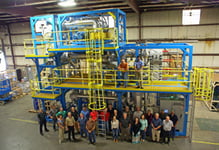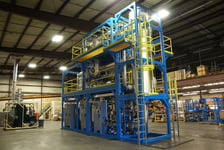
RCRA-8 Heavy Metals
- Home
- »
- News & Resources
- »
- Wastewater Regulations & Guidelines
- »
- RCRA-8 Heavy Metals
WHAT ARE THE RCRA-8 METALS?
RCRA is an acronym for Resource Conservation and Recovery Act. RCRA is a law that creates a framework for proper management of hazardous and non-hazardous waste.
In order for a waste type to be categorized as a hazardous waste (and regulated as such), it must exhibit at least one of four characteristics: toxicity, ignitability, corrosivity, or reactivity. Heavy metals contribute to toxicity. RCRA lists and monitors a group of eight heavy metals, which are commonly referred to as the RCRA-8. This includes arsenic, barium, cadmium, chromium, lead, mercury, selenium, and silver.
Please reference the chart below for the EPA’s allowable limits for each heavy metal as well as the hazardous waste code. If your waste stream contains one of these metals at a concentration above the allowable limit, it will likely be characterized as hazardous by the EPA.

Heavy Metal | EPA Allowable Limits | Hazardous Waste Code |
Arsenic | 5.0 ppm (mg/L) | D004 |
Barium | 100.0 ppm (mg/L) | D005 |
Cadmium | 1.0 ppm (mg/L) | D006 |
Chromium | 5.0 ppm (mg/L) | D007 |
Lead | 5.0 ppm (mg/L) | D008 |
Mercury | 0.2 ppm (mg/L) | D009 |
Selenium | 1.0 ppm (mg/L) | D010 |
Silver | 5.0 ppm (mg/L) | D011 |
Trusted by the World's Most Respected Companies











